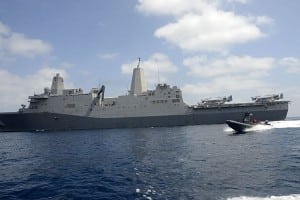
The Marine Corps is optimistic it will get the remaining funding it needs for its LPD-28 amphibious transport dock, which will keep the same hull design as the earlier ships in the class but may be outfitted with some different systems as the sea services transition from the LPD class to the LX(R).The Navy and Marine Corps decided last year to replace the LSD dock landing ships with a scaled-down version of the LPD-17 class–the Marine Corps loved the LPD…












